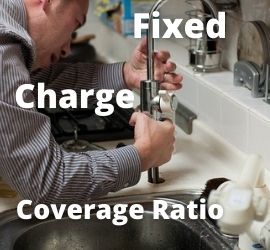What Is EBIDA – Earnings Before Interest, Depreciation and Amortization?
 EBIDA is an after-tax measure of a company’s operating performance. It’s an acronym for Earnings Before Interest, Depreciation & Amortization.
EBIDA is an after-tax measure of a company’s operating performance. It’s an acronym for Earnings Before Interest, Depreciation & Amortization.
EBIDA is a measure of a company’s earnings that adds interest expense, depreciation, and amortization to net income. However, it does contain tax charges. This metric is not as well recognized or frequently used as its counterpart, EBITDA (earnings before interest, taxes, depreciation, and amortization). In general, this metric is used to compare different companies in the same industry. It excludes direct financing effects. However, EBIDA is sometimes used as a statistic to identify corporations that do not pay their taxes.
EBIDA – A Closer Look at Earnings Before Interest, Depreciation, and Amortization
EBIDA can be calculated in a variety of methods. For example, simply adding interest, depreciation, and amortization to net income. EBIDA can also be calculated by adding depreciation and amortization to earnings before interest and taxes (EBIT) and then subtracting taxes. In most cases, the calculation is used to compare companies in the same industry. It excludes the direct consequences of financing, where taxes are paid as a direct result of a company’s usage of debt.
When applied to publicly traded corporations, EBIDA is a particularly effective tool. This is due to the fact that these companies’ financial accounts are periodically audited. Also, preparation uses standardized processes following GAAP accounting principles and guidelines. GAAP (Generally Accepted Accounting Principles) is a comprehensive, standardized system of recording a company’s profits and expenses. This enables prospective investors to compare businesses and industries on an equal footing. Many small businesses do not adopt GAAP methods since the intricacy adds to their accounting costs.
EBIDA Formula and Calculation
The formula to calculate EBIDA is as follows:
EBIDA = Net Income + Interest + Depreciation + Amortization
EBIDA Disadvantages
Companies and analysts seldom compute EBIDA as an earnings indicator.
- Not a standardized measure – EBIDA is not a standard measure to track, compare, evaluate, and forecast. Instead, EBITDA is typically regarded as one of the most important profits indicators.
- Can be misleading – EBIDA can be misleading because it will always be greater than net income and, in most situations, greater than EBIT.
- Not governed by GAAP accounting principles – EBIDA, unlike other popular metrics such as EBITDA and EBIT, is not governed by Generally Accepted Accounting Principles (GAAP). Therefore what is included is at the discretion of the company.
- Excludes important accounting metrics – Along with the criticism leveled at EBIT and EBITDA, the EBIDA statistic excludes important information. For example, working capital changes and capital expenditures (CapEx).
EBIDA vs EBITDA
Compared to EBITDA, EBIDA is considered a more conservative valuation approach. However, it is less commonly used, especially for publicly traded companies.
EBIDA
- Includes tax expense – EBIDA includes tax expense in the calculation of earnings. This eliminates the premise that tax money will be used to reduce debt. This debt payment assumption is made since interest payments are tax-deductible. As a result, this can further reduce the company’s tax expenditure, allowing more money to pay off debts. However, because EBIDA does not assume a reduction in tax expenditure through interest expense, it is not included in net income.
- Preferred by companies with low net income – As a result, enterprises with little net income use EBIDA to “window-dress” their profitability. EBIDA is almost usually more than the reported net income.
- Not covered by GAAP – Furthermore, because EBIDA is not governed by GAAP, investors must rely on the company’s judgment to determine what is and is not included in the computation from one period to the next. As a result, while examining a company’s EBIDA, it is best to consider additional elements such as capital expenditures, changes in working capital requirements, debt payments, and, of course, extraordinary items.
- Does not consider consequences of debt – EBIDA does include the direct effects of financing decisions in that the taxes a company pays is a direct consequence of its use of debt. Such analysis is particularly important when comparing similar companies across a single industry.
EBITDA
- Business health indicator – EBITDA provides a better view of actual business health. And how well its business model is working
- Reduces variables – It removes capital investment and financing variables
- Highlights day-to-day costs – It only accounts for necessary expenses for the day-to-day running of the business
- Identifies cash flow – It represents the cash flow generated by ongoing operations
- Indicates profitability – It gives a good sign of how well the business is able to produce profits
- Compares apples-to-apples – It lets you compare how efficient a company is against its competitors
However, there are some concerns to be addressed. It is worthwhile to examine the interest, tax, depreciation, and amortization amounts in greater detail. Depreciation and amortization are included in EBITDA. There is a belief that these types of costs can be avoided. Ultimately, they can’t be put off indefinitely. For example, if you have manufacturing equipment, it will eventually need to be replaced or upgraded.
Taxes and earnings issues
EBIDA can often be found as a metric for companies that do not pay taxes. This can include many nonprofits, such as non-for-profit hospitals or charity and religious organizations. In this case, it can be used interchangeably with EBITDA. Earnings before interest, depreciation and amortization (EBIDA) is considered to be a more conservative valuation measure than EBITDA because it includes the tax expense in the earnings measure. The EBIDA measure removes the assumption that the money paid in taxes could be used to pay down debt, an assumption made in EBITDA. This debt payment assumption is made because interest payments are tax-deductible, which, in turn, may lower the company’s tax expense, giving it more money to service its debt. EBIDA, however, does not make the assumption that the tax expense can be lowered through the interest expense and, therefore, does not add it back to net income. (Source: investopedia.com)
Up Next: What are TruPS – Trust Preferred Securities?
 TruPS are trust-preferred securities issued by bank holding companies (BHC). They have some characteristics of both preferred stock equity and subordinated debt.
TruPS are trust-preferred securities issued by bank holding companies (BHC). They have some characteristics of both preferred stock equity and subordinated debt.
Trust preferred securities (TruPS) are hybrid securities. They are issued by banks and bank holding companies (BHCs) beginning in 1996. The funds held in trust initially were included in regulatory tier 1 capital. Also, the dividend payments were tax deductible for the issuer. However, these two advantages to the issuer have been modified through subsequent regulation over the years.
Initially, the bank would open a trust fund with debt. Then, the bank would parcel out shares of the trust and sell them to investors in the form of preferred stock. The resulting stock is called trust preferred security or TruPS. When buying a trust preferred security, the investor is buying a portion of the trust and its underlying holdings. Owning TRUPs is not a piece of ownership in the bank itself.
Following the 2008-09 financial crisis, TruPS came under heightened regulatory scrutiny. The majority of these issues were phased out by the end of 2015. This came as a result of the Dodd-Frank regulations and the Volcker Rule.




